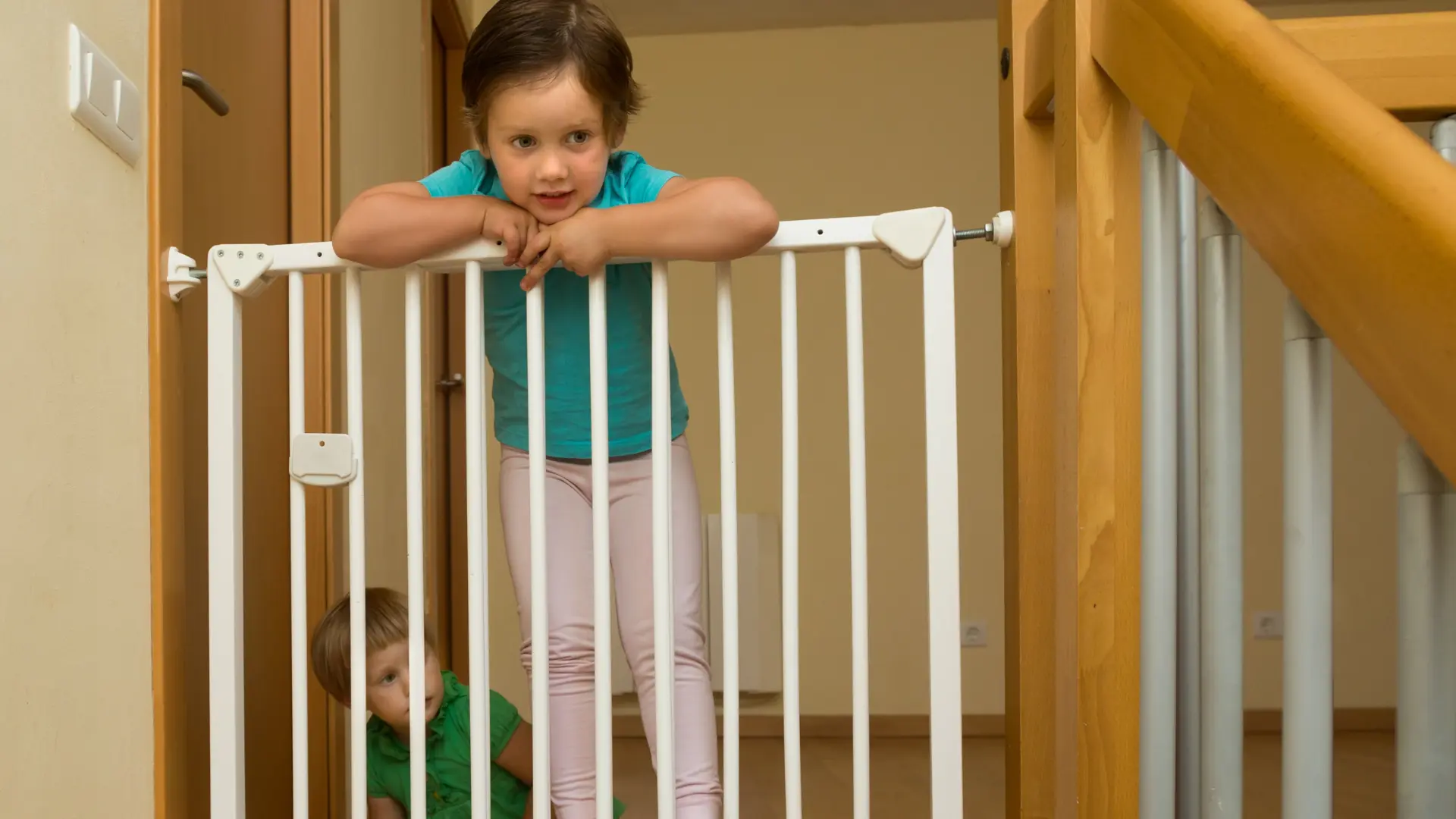There’s a unique magic in watching your baby transition from a tiny, cooing infant into a curious explorer. One day they are nestled in your arms, and the next, they are rolling, crawling, and pulling themselves up on anything they can find. This newfound mobility is a joyous milestone, but it also opens up a whole new world of worries for parents. Suddenly, your familiar and comfortable home looks like an obstacle course filled with potential hazards. How do you protect your little one on their grand adventure of discovery?
The answer lies in babyproofing your home. This isn’t about wrapping your child in cotton wool or hindering their natural curiosity. Instead, babyproofing is the thoughtful process of creating a safe space where your baby can explore, learn, and grow without unnecessary risks. As a paediatrician, I’ve seen the peace of mind that proactive safety measures can bring. At Borneo Hospital, with our branches in Thane, Nashik, Chhatrapati Sambhaji Nagar, and Raipur City, our mission is to partner with you in nurturing your child’s health and well-being. This guide offers a practical, room-by-room approach to help you effectively babyproof your Indian home, making it a secure haven for your precious explorer.
The ‘Why’ and ‘When’ of Babyproofing
Why ‘Babyproofing Your Home’ is Non-Negotiable
Babies, especially between 6 and 12 months, are driven by an incredible curiosity. They learn about the world by touching, tasting, and testing everything within their reach. However, at this developmental stage, they have absolutely no understanding of danger. A colourful detergent pod looks like a sweet, a dangling electrical cord seems like a fun toy, and a hot cup of chai on the coffee table is simply an interesting object to grab.
This combination of mobility and innocence is what makes babyproofing so critical. Common household accidents like falls, burns, choking, and poisoning are preventable, yet they remain a significant concern. A comprehensive approach to babyproofing your home is one of the most important steps you can take to ensure your child’s safety, allowing them to thrive in a secure environment.
When to Start? The Ideal Time to Secure Your Home
Many parents wait until their baby starts crawling to think about safety. However, the best time to start babyproofing is well before your little one is on the move, ideally during the last trimester of your pregnancy. Why? Because once the baby arrives, your hands will be full, and finding the time and energy for home modifications becomes a real challenge.
A proactive approach allows you to methodically identify and address hazards without the pressure of a newly mobile infant exploring every nook and cranny. It prevents the last-minute panic and ensure your home is a safe playground from the very first day your baby begins their explorations. It’s a simple step that offer immense peace of mind.
The Golden Rule of Babyproofing: Get on Your Child’s Level
See the World Through Your Baby’s Eyes
Before you buy a single safety gadget, perform this simple yet profoundly effective exercise: get down on your hands and knees. Crawl around your living room, your kitchen, your bedroom. What do you see? This change in perspective is eye-opening. You will suddenly notice the uncovered electrical socket hiding behind the sofa, the sharp corner of the coffee table that is at the perfect height to cause a nasty bump, the small bead that fell off a cushion, and the tempting-looking wires behind the television. From an adult’s height, these hazards are often invisible. But from a baby’s vantage point, they are fascinating invitations to touch and taste. This simple action is the most powerful starting point for your babyproofing your home journey.
A Room-by-Room Guide to ‘Babyproofing Your Home’
Here is a customised, room-by-room guide to help you identify and mitigate common household hazards.
1. The Nursery/Baby’s Room: Creating a Safe Haven
This is the one room where your baby will likely spend the most unsupervised time, so it needs to be a fortress of safety.
- Crib Safety: The cot or crib must be the safest place for your baby. Ensure it has a firm mattress that fits snugly, leaving no gaps. Remove all loose bedding, pillows, bumpers, and soft toys, as these pose a suffocation risk (SIDS). The gap between the crib slats should be no wider than 2 3/8 inches (about the width of a soda can) to prevent your baby’s head from getting trapped.
- Furniture: Heavy furniture like cupboards, chests of drawers, and changing tables can be a tipping hazard if your child tries to climb them. Use furniture anchors or brackets to secure them firmly to the wall.
- Windows: Keep the crib and any other furniture away from windows. Install window guards or grilles, which are essential in Indian apartments. Ensure any cords from blinds or curtains are tied up high and completely out of reach to prevent strangulation.
- Toys: Choose toys that are age-appropriate. For babies, this means no toys with small, detachable parts that can become choking hazards. Regularly check their toys for any damage.
2. The Living Room: Where the Family Gathers
The living room is a hub of activity, and it’s filled with objects fascinating to a curious crawler.
- Furniture: That beautiful glass coffee table or the sleek TV stand can have dangerously sharp corners. Cover all sharp edges with soft corner and edge guards. They are inexpensive and easy to install.
- Electrical Safety: Electrical sockets are irresistibly interesting to tiny fingers. Cover all unused sockets with childproof outlet covers. Secure all loose wires and cables from your TV, lamps, Wi-Fi router, and other electronics. Use cable concealers or ties to tuck them away neatly. Many accidents happens due to this.
- Heavy Objects: Modern flat-screen TVs are lightweight and can be easily pulled over. Mount your television securely to the wall or use a TV strap to anchor it to the media unit. The same goes for tall bookshelves or display units. Remove heavy, unstable decorative items like vases or statues from low shelves.
- Plants: Many common houseplants can be toxic if their leaves or berries are ingested. Check if your plants are child-friendly. If not, move them to a location that is completely out of your child’s reach.

3. The Kitchen: The Heart of the Home, and a Hub of Hazards
The kitchen is arguably the most dangerous room for a child. Constant vigilance is key, but these babyproofing steps are essential.
- Cabinet and Drawer Locks: Your lower cabinets and drawers are a treasure trove for a toddler, often containing cleaning supplies with harmful chemicals, sharp objects like knives and peelers, or heavy utensils. Install safety latches or magnetic locks on all of them.
- Stove Safety: Use stove knob covers to prevent your child from turning on the gas or heat. A stove guard can prevent them from reaching up and touching hot surfaces or pulling down pots. Always cook on the back burners and turn pot handles inward, away from the edge of the stove.
- Appliances: Keep small appliances like mixers, toasters, and kettles unplugged and pushed to the back of the counter when not in use. A refrigerator latch can stop little fingers from getting pinched or accessing food items that may be choking hazards.
- Waste Bins: A dustbin is full of germs and hazards. Use a bin with a secure, child-resistant lid.
4. The Bathroom: Water, Slips, and Other Risks
Water, medicines, and slippery surfaces make the bathroom another high-risk area.
- Supervision is Key: The most important rule in the bathroom is to never, ever leave a baby or young child unattended, not even for a second. A child can drown in just an inch of water.
- Water Safety: Place a non-slip mat inside the bathtub or shower and on the floor outside it. Always keep the toilet lid down and consider installing a toilet lock. In many Indian homes, buckets are used to store water; always ensure these are emptied immediately after use.
- Medicines and Toiletries: All medicines, supplements, lotions, and cosmetics must be stored high up in a locked cabinet. Many of these products are toxic if ingested.
- Electrical Appliances: Keep hair dryers, electric shavers, and other appliances unplugged and stored away safely.
5. General Household Safety (Balconies, Stairs, and More)
- Stairs: If you have stairs, installing safety gates at both the top and the bottom is absolutely essential. Choose hardware-mounted gates for the top of the stairs, as they are more secure than pressure-mounted ones.
- Doors: Use door stoppers and anti-slam devices to protect little fingers from getting caught. Keep doors to potentially unsafe areas like balconies, garages, or utility areas closed and locked.
- Balconies and Windows: This is a major concern in urban India. Ensure your balcony railings are high and, crucially, have vertical bars, not horizontal ones that a child could use as a ladder. All openable windows should have grilles installed.
- Choking Hazards: Regularly sweep or vacuum your floors to pick up small items. A good rule of thumb is the “toilet paper roll rule”: if an object is small enough to fit through a cardboard toilet paper roll, it’s a potential choking hazard for a baby. Common culprits include coins, buttons, marbles, and nuts.

The ‘Babyproofing Your Home’ Checklist
For busy parents, here’s a quick and scannable checklist to help you get started on your babyproofing your home project.
| Area | Safety Action |
| Electrical | Cover all unused sockets. Secure and hide loose cords. |
| Furniture | Anchor heavy furniture (TVs, cupboards) to walls. Apply edge guards to sharp corners. |
| Kitchen | Install locks on lower cabinets/drawers. Use stove knob covers and a stove guard. |
| Bathroom | Use non-slip mats. Install a toilet lock. Store all medicines in a locked cabinet. |
| Choking/Poisons | Keep small objects off the floor. Store cleaning supplies high up and locked away. |
| Falls | Install safety gates for stairs. Install grilles on windows and ensure balcony safety. |
| General | Use door stoppers. Keep buckets empty. Ensure houseplants are non-toxic and out of reach. |
Beyond the Checklist: Fostering a Safe Environment
Please remember that babyproofing your home is not a one-time task. It is an ongoing process. As your child grows, they will become taller, stronger, and more creative in their quest for exploration. You will need to periodically reassess your home for new potential hazards. What was safe for a crawler might not be safe for a toddler who can now climb.
Ultimately, no amount of babyproofing can replace the most effective safety device of all: close and attentive adult supervision. These safety measures are designed to provide a safer environment and prevent serious accidents, giving you the confidence to let your child explore.
Creating a safe home for your child is one of the greatest gifts you can give them. It provides a secure foundation for them to develop their curiosity, confidence, and independence. By taking a proactive and methodical approach to babyproofing your home, you can significantly reduce the risk of accidents and enjoy the incredible journey of watching your little one discover the world with greater peace of mind.
For any personalised advice or concerns about your child’s health, growth, and safety, our team of dedicated paediatricians is always here to help. We welcome you to connect with us at Borneo Hospital.


